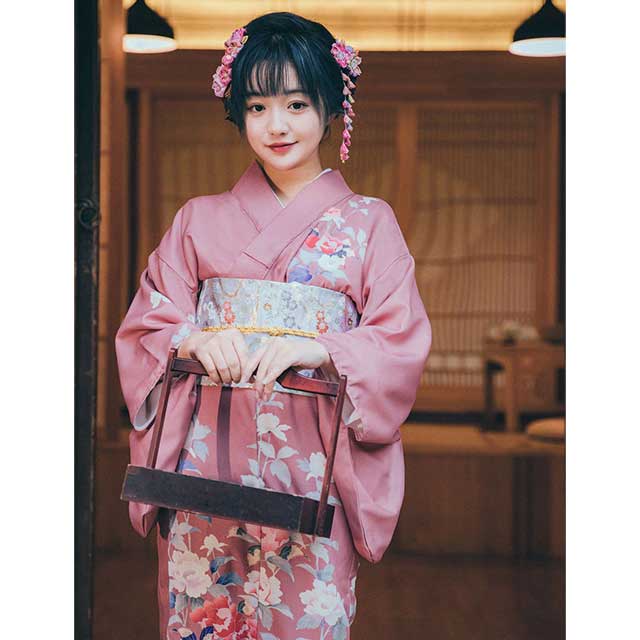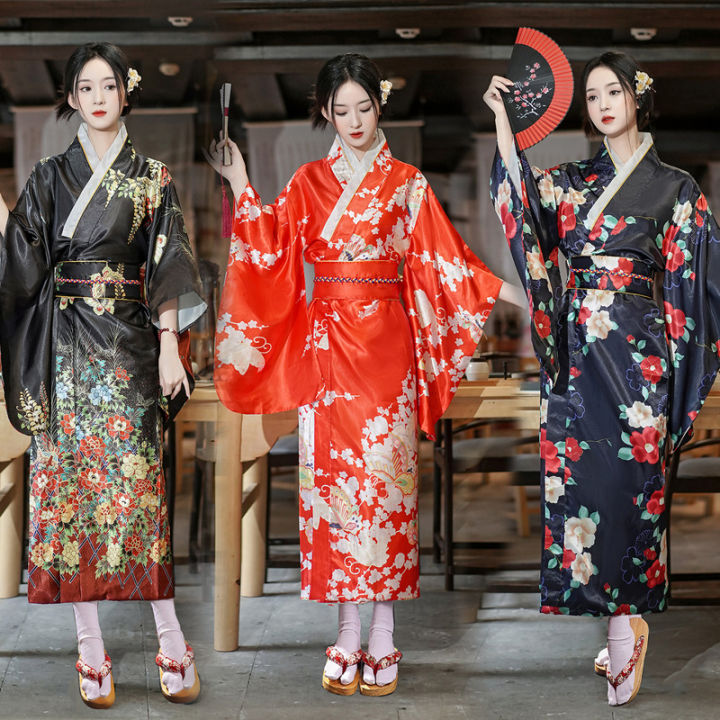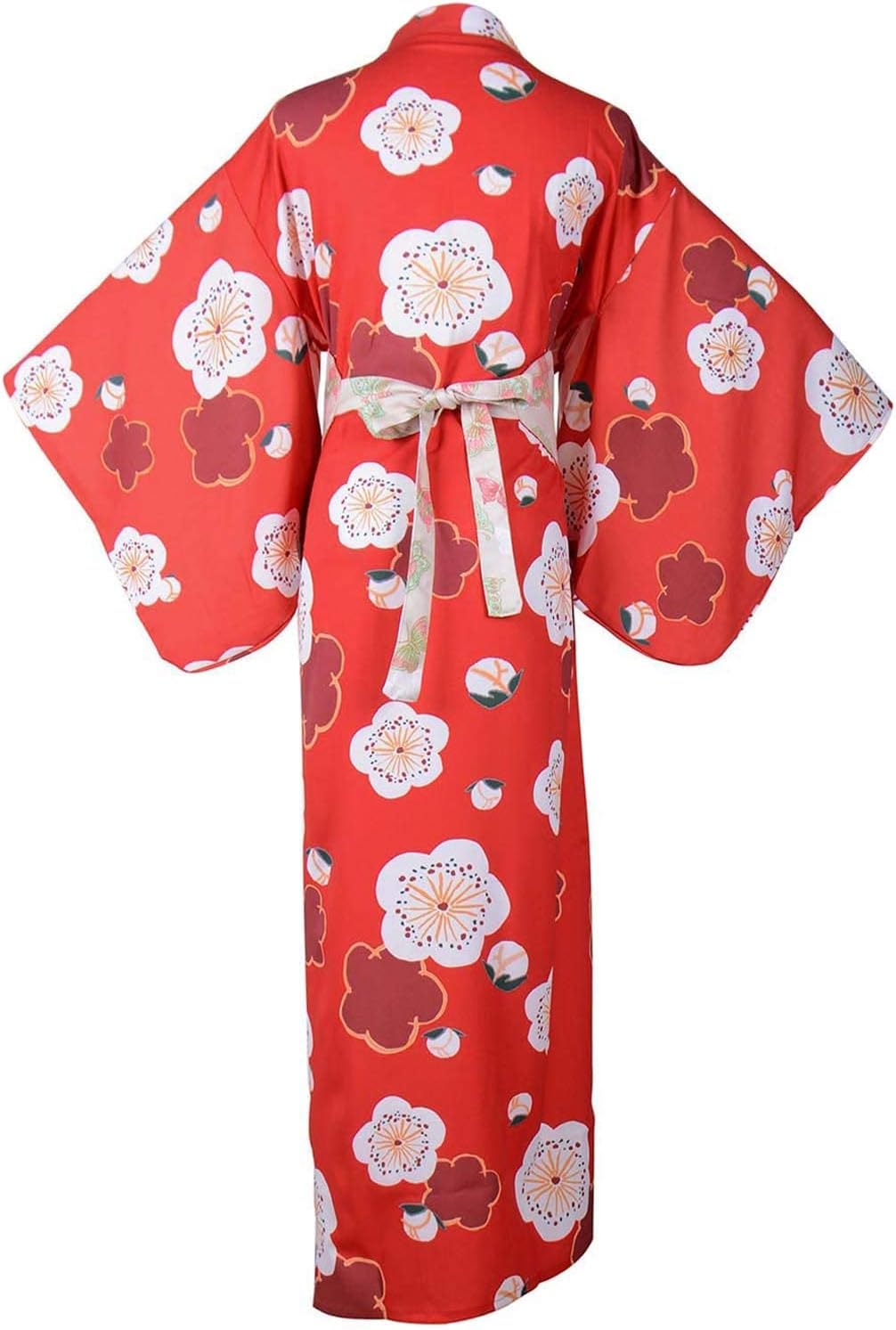The kimono dress blends tradition with modernity, showcasing a unique harmony that captivates fashion enthusiasts around the world. Originally from Japan, the kimono has undergone various transformations to become a versatile and stylish choice for many. This article explores the robe kimono‘s journey from its traditional roots to its modern adaptations, emphasizing its role in today’s fashion world.
Traditional Beginnings
The Essence of Kimono
The traditional Japanese kimono carries centuries of history, signifying grace, social status, and personal taste. Crafted from silk, each kimono serves as a canvas displaying intricate patterns and vibrant colors. The art of wearing a kimono, which involves precise folding techniques and the tying of an obi (a sash), requires skill. This garment’s beauty lies not only in its appearance but in its deep cultural significance to Japanese heritage.

Adaptation for the Modern Era
As global fashion evolves, so does the kimono, transforming into the kimono dress. Designers have re imagined this historical garment to suit contemporary tastes while preserving its symbolic essence. The modern kimono dress often features easier we-arability and care, adopting new fabrics and simpler lines. This evolution allows the kimono dress to maintain its cultural significance while fitting into diverse lifestyle settings and occasions.
Transformation in Fashion
Western Influence and Innovation
In the 20th century, Western fashion began incorporating kimono elements, blending Japanese aesthetics with Western style. This cross-cultural exchange introduced the kimono dress to global audiences, leading to innovative designs that respect traditional forms while offering new interpretations. Designers experiment with lengths, fabrics, and patterns, creating kimono dresses that appeal to a broad audience while fostering a unique fashion dialogue between cultures.
Contemporary Kimono Styles
Today, the kimono dress appears in various forms, from formal gowns to casual summer wear. Its adaptability makes it a favorite among those who appreciate both its comfort and elegance. Modern adaptations often simplify the traditional kimono’s complex structure, making the garment more accessible to those unfamiliar with its traditional dressing techniques. These contemporary versions continue to influence global fashion, allowing wearers to make a statement that transcends cultural and temporal boundaries.

Cultural Significance and Modern Acceptance
Preserving Tradition in Modern Design
Although the kimono dress has adapted over time, designers remain mindful of its cultural roots. Many strive to preserve the traditional kimono’s essence, treating it with respect and reverence. This mindful approach ensures that the kimono dress remains a symbol of cultural heritage rather than merely a fashion trend. By incorporating traditional motifs and techniques, modern kimono dresses pay homage to their origins.
The Global Appeal of the Kimono Dress
The kimono dress’s universal appeal lies in its unique blend of aesthetics, comfort, and cultural depth. It has found fans across the globe, with people of diverse backgrounds drawn to its distinctive style. Fashion shows, cultural exhibitions, and mainstream media have all contributed to the kimono dress’s rising popularity, showcasing its versatility and the seamless way it integrates into various fashion sensibilities.

Future Directions
Innovation and Sustainability
As the fashion industry moves towards more sustainable and ethical practices, the kimono dress is also experiencing a transformation. Designers are exploring eco-friendly materials such as organic cotton, bamboo, and recycled polyester to create kimono dresses. These innovations reduce environmental impact and appeal to eco-conscious consumers. Moreover, the longevity and quality of traditional kimonos inspire modern designs to focus on durability rather than fast fashion, aligning with a broader movement towards sustainability in the fashion industry.
The Digital World and the Kimono Dress
The rise of online shopping and digital fashion platforms has made the kimono dress more accessible than ever before. Consumers worldwide can now explore a range of kimono dresses, from authentic traditional garments to modern interpretations, with just a few clicks. Virtual reality (VR) and augmented reality (AR) technologies offer interactive experiences, allowing customers to “try on” dresses digitally. This technological advancement not only broadens the kimono dress’s market but also introduces it to new audiences, fostering a greater appreciation for its cultural significance and aesthetic appeal.

Challenges and Considerations
Balancing Tradition and Modernity
As the kimono dress evolves, designers face the challenge of balancing traditional elements with contemporary design needs. Maintaining the garment’s cultural integrity while making it appealing to modern wearers requires a delicate equilibrium. Designers must navigate between respecting the kimono’s heritage and reinterpreting it for today’s fashion landscape. This often involves collaboration with traditional artisans to ensure that new designs honor the craftsmanship and symbolism of the original kimonos.
Cultural Sensitivity and Appreciation
The global popularity of the kimono dress raises important questions about cultural sensitivity and appropriation. As fashion designers and consumers embrace this garment, it’s crucial to approach it with respect and acknowledgment of its cultural origins. Educating consumers about the history and significance of the kimono can promote a deeper appreciation and ensure that the garment is worn in a way that honors its roots. The fashion industry has a responsibility to foster cultural appreciation, not appropriation, paving the way for a more inclusive and respectful global fashion dialogue.

Conclusion
The kimono dress stands as a brilliant example of how traditional attire can evolve to meet the demands of modern fashion while retaining its cultural significance. Its journey from the historical streets of Japan to the global fashion stage is a testament to the enduring appeal of the kimono and its ability to adapt and inspire. As fashion continues to evolve, the kimono dress will undoubtedly remain a cherished garment that symbolizes the beautiful intersection of tradition and modernity, offering endless possibilities for creativity and expression in the fashion world.
The kimono dress’s journey from traditional Japanese garment to global fashion icon is a remarkable story of adaptation and resilience. Its ability to balance cultural heritage with modern appeal makes it a unique and cherished item in the fashion world. As we look towards the future, the kimono dress stands as a symbol of cultural exchange, innovation, and sustainability. By embracing the values of respect, appreciation, and ecological sensitivity, the fashion industry can continue to celebrate the kimono dress not only as a piece of clothing but as a bridge between cultures and a testament to the enduring beauty of tradition in a rapidly changing world.



